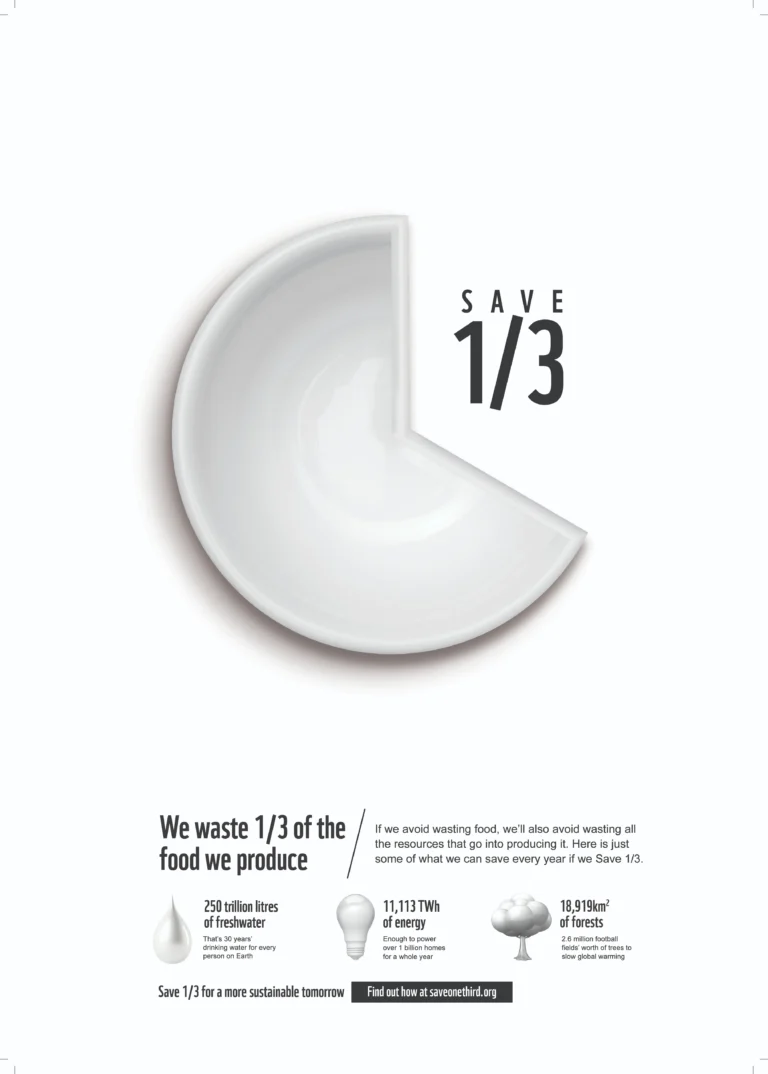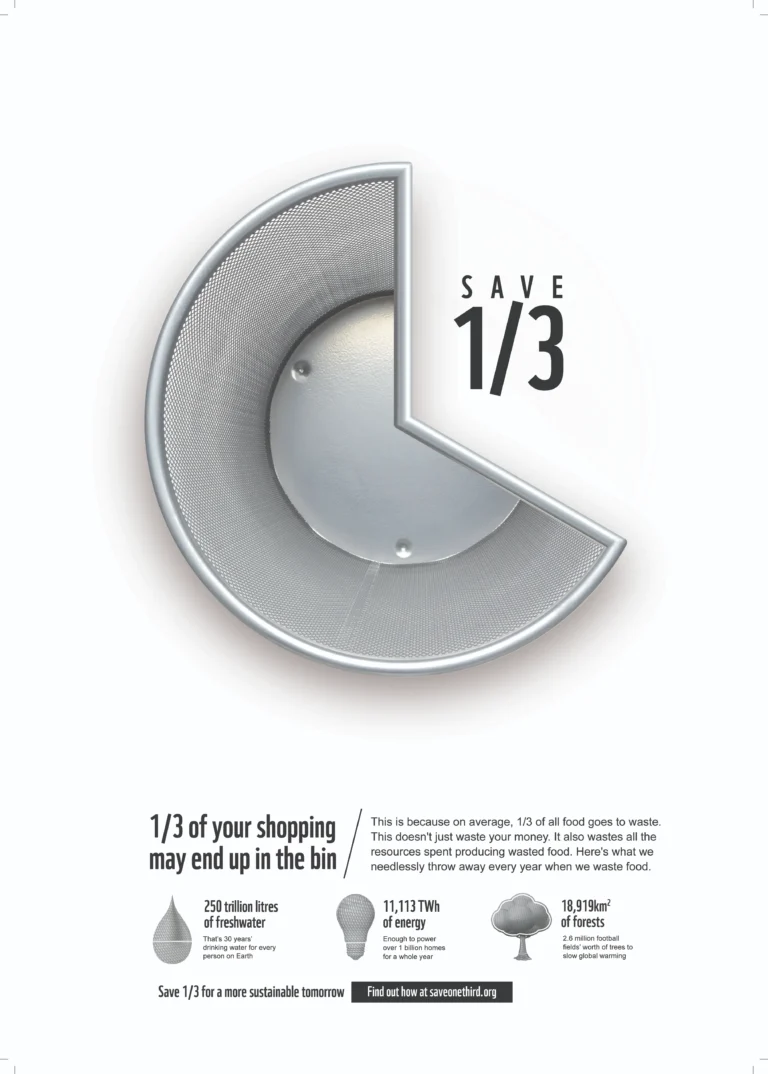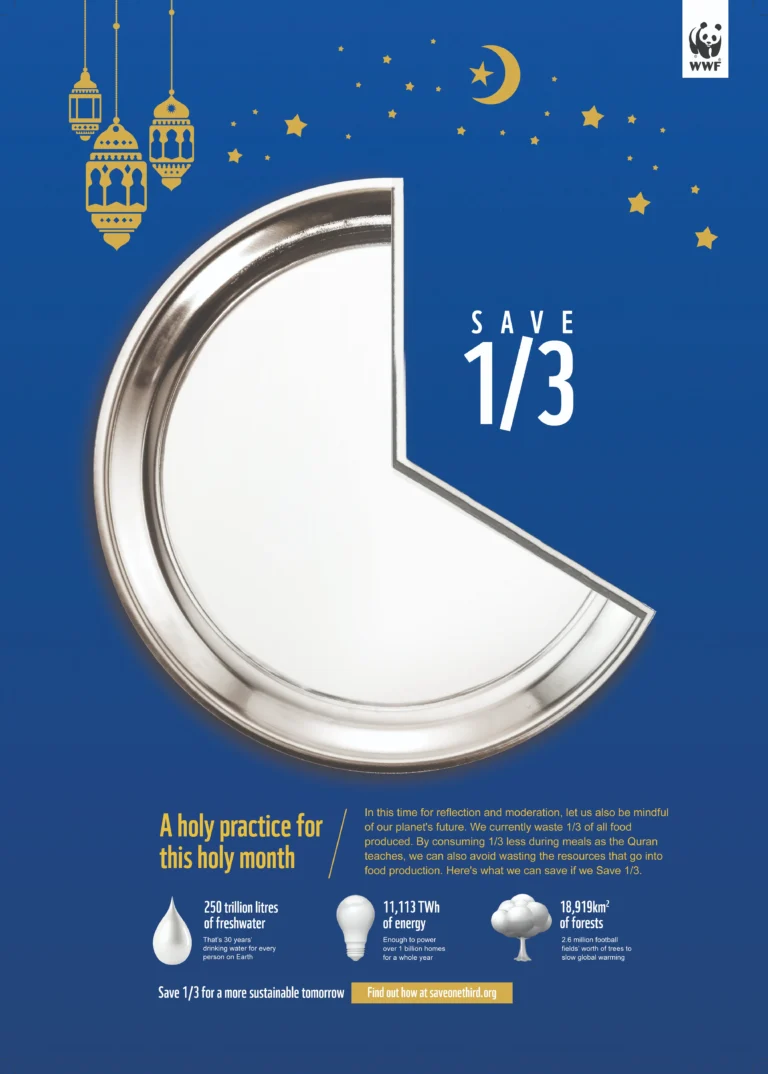Campaign Overview
Around 1/3 of all food produced goes uneaten. This wasted food represents a huge waste of valuable natural resources–such as land, water, energy–human effort in producing and cooking it, and money. When wasted food ends up in landfill, it decomposes and emits methane, a greenhouse gas that warms our atmosphere more rapidly than carbon. In particular, huge amounts of food waste is generated during festivals and cultural celebrations, like Christmas, Chinese New Year, Thanksgiving and Ramadan where traditions around food are often rooted in abundance.
The Save 1/3 campaign empowers people to reduce food waste by framing the issue positively and providing practical tools to shop, cook, and eat more mindfully. The campaign is supported by a diverse range of assets—from mass awareness content shared through WWF’s channels and high-profile collaborations like with Masterchef Asia, to practical materials designed for restaurants, hotels, and retailers to influence behaviour at the point of purchase. It also includes educational resources, such as school lesson plans, aimed at informing and inspiring the next generation.
Designed for global reach and local engagement, the campaign has also been designed to be fully customisable for ease of localisation. It can be activated around any major cultural or religious celebration, with messaging crafted to resonate with the spirit of generosity and sharing, without dampening people’s desire to celebrate.
Explore the Save 1/3 campaign and learn more about the opportunities and tools available at at www.saveonethird.org
Outcomes & Results
The Save 1/3 campaign has been activated in more than 30 countries, across more than a dozen languages and during at least eight major celebrations or events. Its global reach has been matched by strong local engagement, demonstrating the campaign’s adaptability and relevance across diverse contexts.
Hundreds of thousands of individuals have signed a pledge to reduce their personal food waste. At the same time, dozens of restaurants, hotels and supermarkets have joined the movement, actively educating their customers and encouraging more sustainable behaviours around food.
Through mass communications, partnerships, and educational initiatives, the campaign has reached and informed hundreds of millions of people worldwide—equipping them with the tools and knowledge to shop, cook, and eat more mindfully.
Beyond public awareness, the campaign has acted as a springboard for strengthening partnerships with several businesses implementing solutions to reduce food waste through their supply chain and a number of schools integrating lesson plans into their teaching.
Asset Types
- Social media posts
- Social media video (stories, reels, GIFs…)
- Website landing page
- Website articles
- Other video assets
- Digital ads
- Video ads (for TV or online)
- Print ads
- OOHs or DOOHs (poster or billboards)
- Brochures or flyers
- Merchandise (t-shirts, hats, etc.)
- Press release
- Toolkits
Conditions of Reuse
The campaign concept and creative assets may be reused “as is” by other WWF offices with minimal modifications (url, logo, local copy),or recreate the campaign in their own tailored execution (eg. for other festivals or cultural celebrations).
Get In Touch
For more information, reach out to WWF International at foodpractice@wwfint.org




